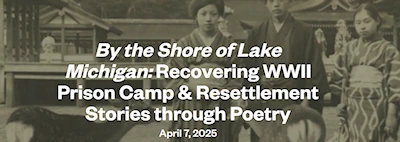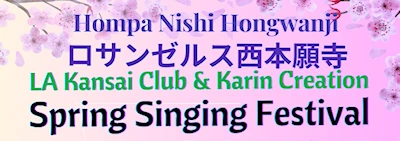2025: 65th Anniversary of One of the United States’ Oldest and Strongest Sister City Relationships-Portland, OregonNEW
Portland, OR 97205
2024 marks the 65th anniversary of one of the United States’ oldest and strongest sister city relationships-Portland, Oregon in the U.S. and Sapporo, Hokkaido in Japan. This sister city relationship, which has fostered an everlasting friendship across the Pacific, has also come to be manifested in more tangible forms. One such example is our Sapporo Pagoda Lantern, a gift delivered to us in 1964 as our landscape was being built. Learn more about this stunning 18-foot stone lantern and why our friendship with Sapporo has been so vital to the establishment and continued success of Portland Japanese Garden.
The Sapporo Pagoda Lantern
Of all the many stone lanterns throughout Portland Japanese Garden, none might be as visually arresting as the Sapporo Pagoda Lantern. No matter which way it is approached, through the Wisteria Arbor, the Camellia Tunnel, or along the slope of Cherry Tree Hill, its towering 18 feet draw the eye immediately. Grand and stately, the lantern’s form is that of a goju-no-to, or five-story pagoda. This Buddhist architectural style is rooted in the Indian stupa. As the religion was transmitted across Asia, the stupa’s dome was transformed into a tower in China. It was this form that was exported to Japan in the sixth century when the faith was first introduced there. Notably, the Sapporo Pagoda Lantern’s finial top (hoju) is stylized as a lotus, a flower deeply associated with Buddhism.
Thought to be more than 100 years old, the Sapporo Pagoda Lantern is an impressive two tons in weight and is composed of highly regarded granite quarried from the island of Shikoku. The lantern had been on the grounds of the Sugawara Mansion in the city of Otaru, a northwest neighbor of Sapporo, Japan. Founding Portland Japanese Garden Board Member Vivian Abbot wrote in a 1964 press release that the property had once belonged to Motosaburo Kaneko, the first mayor of Otaru Ward and an entrepreneur who ran fishery, shipping, farming, and banking concerns.
The lantern would eventually be purchased by a band of organizations in Japan so the City of Sapporo could donate it an American municipality, one it had just become sister cities with, one that was in the process of establishing a Japanese garden. That city was Portland, and we are that garden. Comfortably ensconced on its mossy hill since 1964, the Sapporo Pagoda Lantern is a physical embodiment of the sister-city relationship between Portland and Sapporo. The story of how it came to Portland begins in our nation’s capital.
On September 11, 1956, President Dwight D. Eisenhower spoke to a crowded room of reporters in Washington, D.C. “I’m emboldened to talk because the purpose of this meeting is the most worthwhile purpose there is in the world today to help build a road to an enduring peace,” the President shared. “The work that we expect to do is based on the assumption that no people want war; that all people want peace.” With that, Eisenhower helped launch one of the most enduring peacebuilding initiatives in American history, the sister cities movement.
While sister-city relationships had existed prior to 1956, the White House Conference on Citizen Diplomacy catalyzed a new era of international partnerships just a decade past the tragedies of World War II. Among the most poignant relationships that would arise would be between Japanese cities and American ones that were still recovering from the wrongful expulsion and incarceration of their residents of Japanese ancestry, including Portland.
That Portland would seek friendship with a Japanese city marked a sea change in its perception of the nation and its people. During the WWII era, Portland had the distinction of being the only major American city on the West Coast to revoke municipal business licenses for Issei (first generation Japanese immigrants). Its City Council also passed a resolution in favor of internment and the concentration camps its Japanese constituency would be condemned to. Attitudes had changed by 1952 when Mayor Dorothy McCullough Lee and Portland Chamber of Commerce President Edgar Smith accepted 2,000 cherry seeds from school children in Japan in a public event.
By the end of the 1950s, Portland was actively considering sister-city relationships in Japan. Two contenders were named in the pages of The Oregonian: the southern city of Shizuoka and the northern city of Sapporo. In the autumn of 1959, Mayor Terry D. Schrunk and a cohort of Portland leaders visited both. It is no secret which city was chosen on November 17.
The Story
Disclaimer: Please double check all information provided on our platform with the official website for complete accuracy and up-to-date details.
Tuesday, 20 May, 2025
Event Contact
Sapporo Pagoda Lantern-Portland Japanese GardenEvent Organizer Website
Visit Organizer Website
Get More Details From the Event Organizer
Event Location Website
Visit Location Website
For More Location Details
Event Information Can Change
Always verify event information for possible changes or mistakes.Contact Us for Issues














![2025 Los Angeles Dodgers Schedule with Japanese Superstars Shohei Ohtani, Yoshinobu Yamamoto and Roki Sasaki (2025 Schedule) [Video] 2025 Los Angeles Dodgers Schedule with Japanese Superstars Shohei Ohtani, Yoshinobu Yamamoto and Roki Sasaki (2025 Schedule) [Video]](/calendar/events/themes/lib/eid/40570i.webp)


